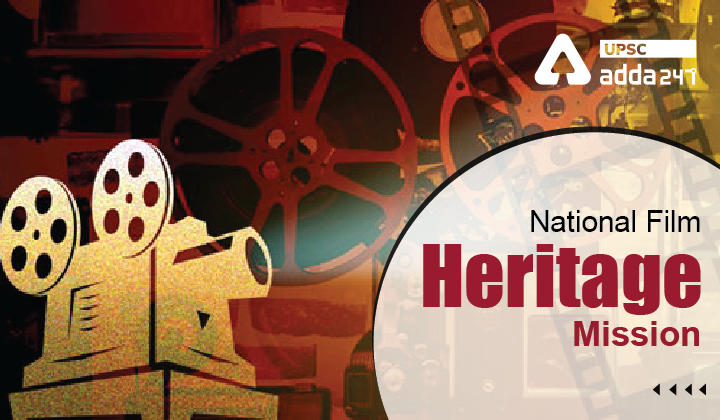Table of Contents
National Film Heritage Mission: Relevance
- GS 2: Government policies and interventions for development in various sectors.
National Film Heritage Mission: Context
- Recently, Ministry of Information & Broadcasting has announced that the World’s largest film restoration project under National Film Heritage Mission (NFHM) has been awarded by the Ministry.
National Film Heritage Mission: Key points
- The restoration project awarded is set to commence in full swing at National Film Archive of India (NFAI).
- Out of the total outlay of Rs. 597 crores earmarked for this Mission, 363 Crore shall be utilized exclusively for restoration purpose, making it one of the World’s largest film restoration projects
- Under National Film Heritage Mission, approximately 2,200 films will undergo restoration.
- The titles have been shortlisted by language wise committees consisting of filmmakers, documentary filmmakers, film historians, producers etc.
- Eminent film personalities such as Aparna Sen, Shriram Raghavan, Anjali Menon and Vetrimaaran were part of the committees.
What is National Film Heritage Mission?
- National Film Heritage Mission launched in 2016 is aimed at preserving, restoring and digitizing our cinematic heritage.
- National Film Heritage Mission in addition to restoration involves the on-going preservation processes of film condition assessment, preventive conservation and digitization, with the total allocated budget of Rs. 597 crores, which is one of the world’s largest film preservation missions.
About Indian Cinema
- Indian Cinema, which has been in existence for more than a hundred years now, holds a very unique place in the pantheon of world cinema.
- The restoration of Indian films will once again give a chance to the current and future generations to relive the glory of these films which have enamoured audiences for decades.
National Film Heritage Mission: Restoration process
- The restoration process includes a large number of films including films include short films, features, documentary Films made in different Indian languages.
- The process involves frame-to-frame digital and semi-automated manual picture and sound restoration from the best surviving source material.
- The source negative/print will be scanned at 4K to .dpx files, which will be then digitally restored.
- The damages including scratches, dirt and abrasions in every frame of the picture negative will be cleaned during the restoration process.
- The sound also restored in a process similar to the picture restoration procedure.
- The numerous pops, hisses, crackles and distortions on the sound negative will be digitally removed.
- After restoration, the digital picture files will be color graded(DI process) and balanced to achieve the look of the film at the time of the original release.
Read current affairs for UPSC





 TSPSC Group 1 Question Paper 2024, Downl...
TSPSC Group 1 Question Paper 2024, Downl...
 TSPSC Group 1 Answer key 2024 Out, Downl...
TSPSC Group 1 Answer key 2024 Out, Downl...
 UPSC Prelims 2024 Question Paper, Downlo...
UPSC Prelims 2024 Question Paper, Downlo...




